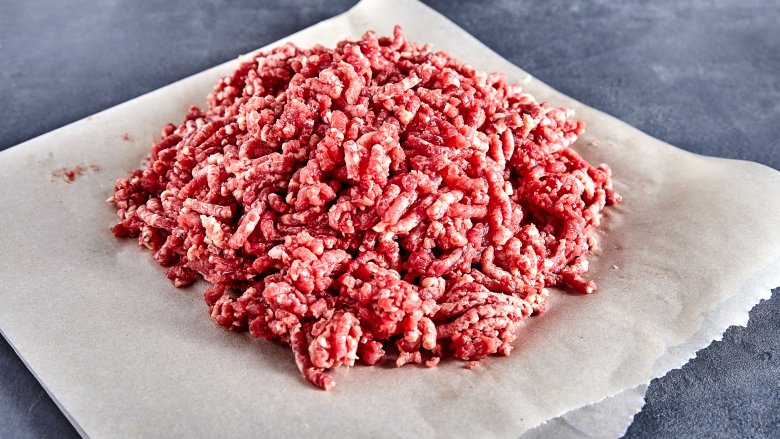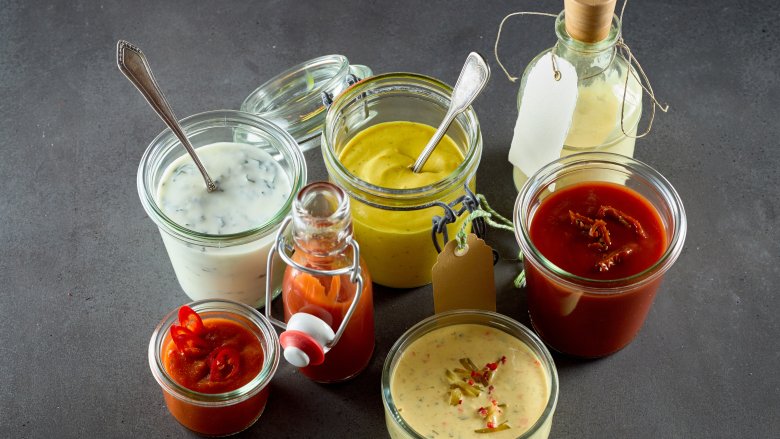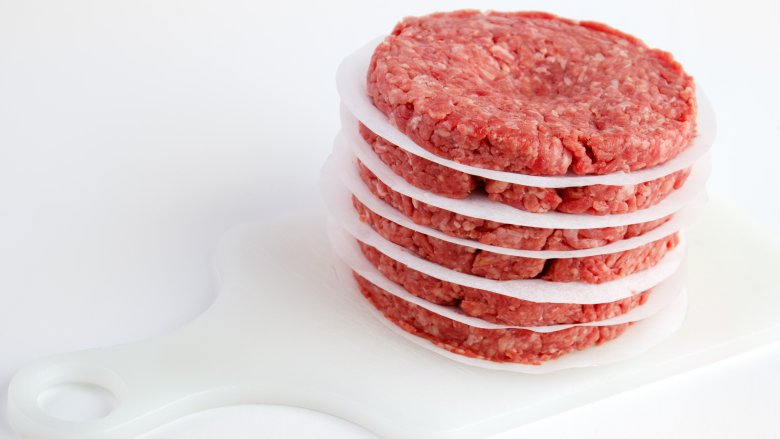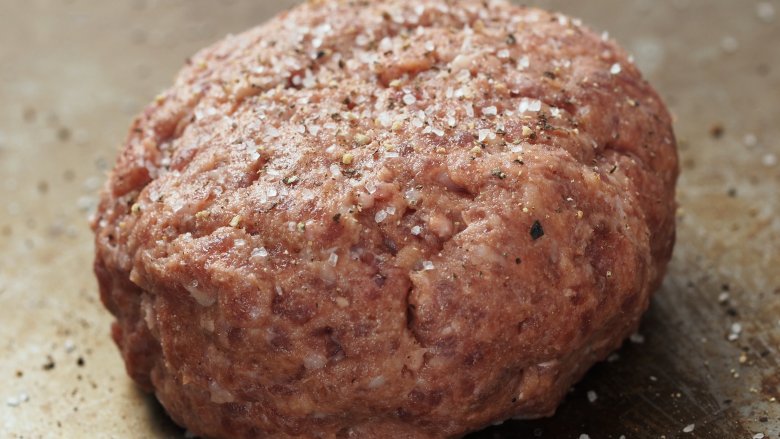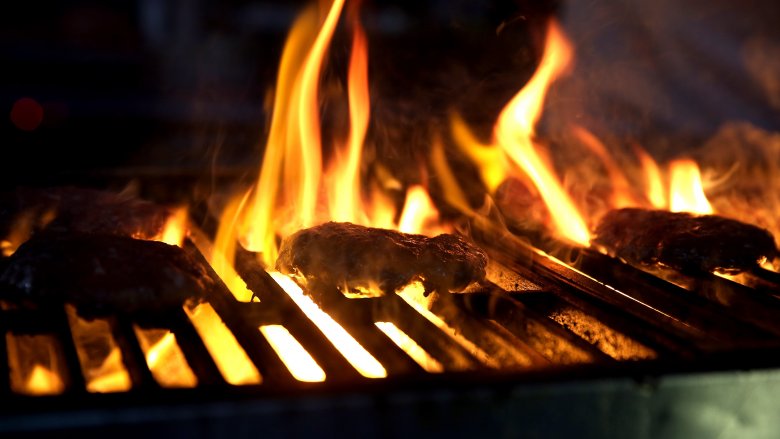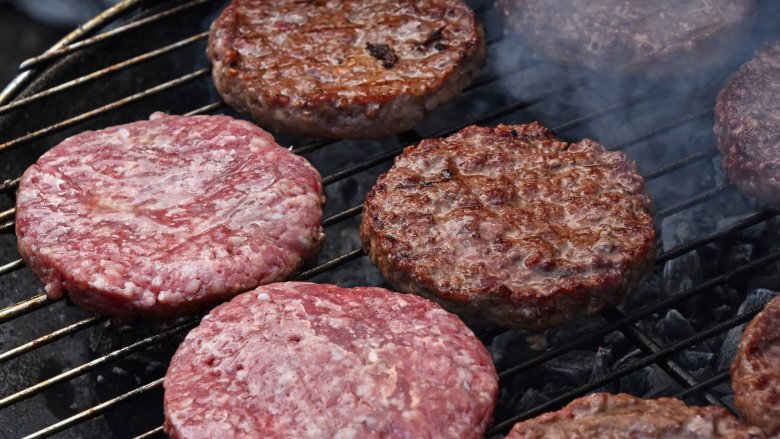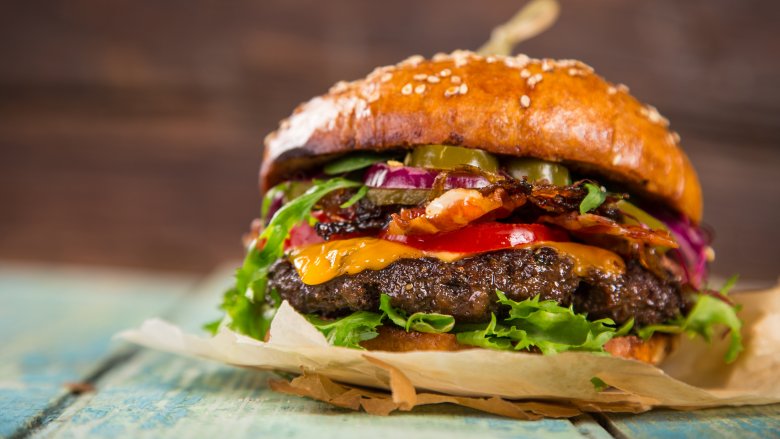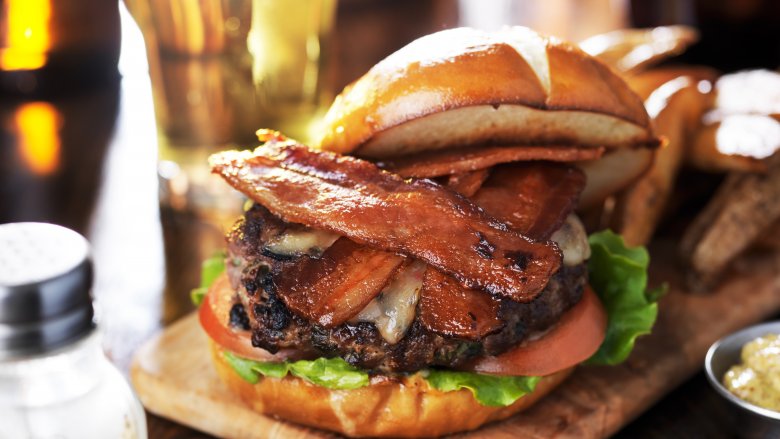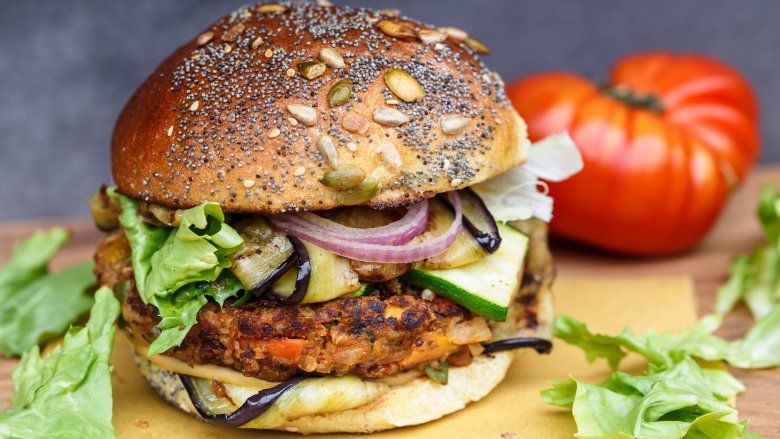Tips For Making Perfect Burgers
Walk right by those pre-made burger patties from the supermarket. With just a few burger-master-worthy tricks up your sleeve, you'll be serving up burgers that will rival those found on the menu of your favorite gastro pub. Whether you prefer classic beef, or you go for a turkey or veggie burger, the following tips and hints will bring you to the top of your burger game during cookout season, and all year long.
Pick the right kind of meat
When it comes to making a dynamite burger, the lean, pricier cuts of meat are just not going to do. In fact, America's Test Kitchen held a taste test using the most popular kinds of ground beef, and found that the beef labeled "ground chuck" was the favorite among testers. Chuck is cut from the shoulder, and testers found the 15-20 percent fat content of the meat to contribute a rich flavor and tender texture. Ground sirloin came in second place, but the lower fat content makes for drier burgers. It is possible to have too much fat, however. Beef labeled generically as ground beef, which can sometimes have up to 30 percent fat, was found to be too greasy.
But what about other meats? Turkey, chicken, and lamb burgers can certainly make a showing at your cookout, but these leaner meats often need the help of some added ingredients to prevent a dry burger.
Add moisture when necessary
The lower the fat content of the meat you use in your burger, the drier your burger will be — unless you help it along with some added moisture in the patties. Lower-fat content meats can benefit from the addition of ketchup, mayonnaise, mustard, Worcestershire sauce, steak sauce, or even freshly grated onions to add the necessary boost of moisture for a juicy, mouth-watering burger.
Work your added ingredient into the meat with your hands — but a word of caution. You don't want to overwork your meat. That's right, it's possible to over-mix the meat, resulting in a tougher burger. Mix your ingredients until just incorporated, and then form well-shaped but somewhat loose patties for tender burgers.
Remember to indent
There is a pro trick to getting perfectly shaped burgers once cooked. Once you've shaped your burgers into patties, press a small indent into the center. This quick trick will combat the tightening of the meat that happens when cooking, and prevent your burgers from turning into oddly shaped balls instead of the nice, even patties you want. It's easy to do with just your fingertips, and will make a world of difference in producing professional looking burgers.
Season properly
When added to meat, salt starts to immediately break the meat down, dissolving its texture and drawing out valuable moisture. For this reason, you don't want to add it to the inside of the patties. Instead, you want to liberally salt the outside of the patties right before you cook them. The only exception would be if you're cooking the burgers immediately, in which case a pinch thrown into the mix will work well. Some freshly ground black pepper would be a welcome addition as well, but salt is a necessity. Unseasoned meat is blah and... unbeefy. My choice would always be kosher salt, but you could also use plain table salt or a fancier specialty salt, as long as you SALT!
Choose your cooking method
Grilling is going to be the preferred method for most burger chefs. Make sure your grill is clean, nice and hot, and well oiled. Lay your burgers out so they have room to breathe, and avoid the temptation to flip them too much or to press down with the spatula, lest you lose those precious juices.
If the weather prevents you from firing up the backyard grill, there are other tried and true methods for getting you closer to burger nirvana. Cast iron pans make great, diner-style, flat burgers, that you'll want to smoosh down with a spatula for a burger with crisped edges. The broiler of your oven or even your toaster oven can stand in for your grill when you've got a burger craving. You could even follow Saveur's advice and steam your burgers in a pot, just like they do at Ted's Restaurant in Meriden, Connecticut.
Know your temperatures
What's the point of crafting the perfect patties if you don't get the meat temperature just right? While there are all sorts of tricks that home chefs employ to detect the doneness of meat, I prefer the only method to be accurate every single time — a thermometer.
- Rare: 125 degrees Fahrenheit
- Medium rare: 130 degrees Fahrenheit
- Medium: 135 – 140 degrees Fahrenheit
- Medium well: 145 – 150 degrees Fahrenheit
- Well done: 155 degrees Fahrenheit and above
Remember, once you take the burgers off the grill, they could use a little rest to redistribute all that juicy goodness. Put them on a plate that's loosely tented with aluminum foil and wait five minutes or longer before dropping them on your buns.
Choose the right toppings
The good news is, there's no wrong answer when it comes to how to top your burger. If you're a purist, you may go with freshly sliced lettuce, tomato, onion, and pickles rounded out with some ketchup or mayo. Go Italian with fresh mozzarella cheese and pesto sauce. Make it a breakfast burger with bacon slices and an oozy fried egg. Nowadays, there's little you can't get on a burger, with folks topping them with peanut butter, mac and cheese, fried ice cream, lobster salad, or chile rellenos. Myself, I think some sliced ripe avocado and red onion is the perfect match for a rare burger with melted cheddar cheese. Whichever toppings you choose, slice everything thin enough so you don't end up with a burger mess on your lap instead of in your mouth.
Choose the right buns
Softer buns like the grocery store sesame, non-seeded, or potato buns are ideal for burgers, or a bakery brioche bun if you're getting a little fancy. Be mindful of the size of your bun, which should be comparable to the size of the patties you'll make — nobody wants a mouthful of just plain bread when they'd rather be noshing on a juicy burger. Personally, my favorite bun would be brioche, slathered with butter and placed on the grill or pan so it crisps up like a delicious slice of Texas toast, but purists will go for the soft, untoasted bun that soaks up all the lip smacking burger juice. Trendy buns, like pretzel rolls, can be a little difficult for your teeth to get through, causing you to push the meat and topping out of the back of your burger when you take a bite. Nobody's got time for that!
What about veggie burgers?
When it comes to veggie burgers, nothing's going to compare to homemade. So skip the processed, frozen hockey pucks from the grocery store, and get yourself one veggie burger recipe that can be your go-to when you're cooking for your vegetarian buds. You could go with a Mediterranean veggie burger made with garbanzo beans, kalamata olives, and artichoke hearts, or perhaps a classic black bean burger with Tex-Mex spices. Whichever recipe you choose, make sure to make yourself a big batch, and store the extra patties in your freezer for homemade veggie burgers at a moment's notice.

